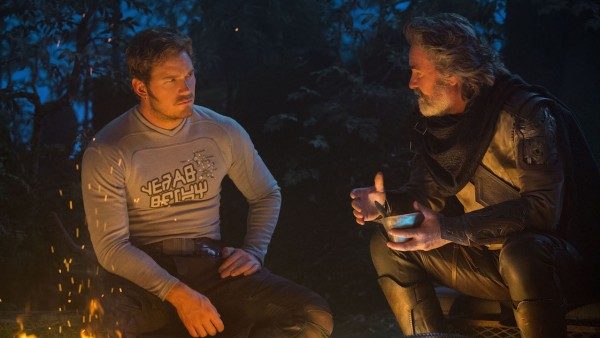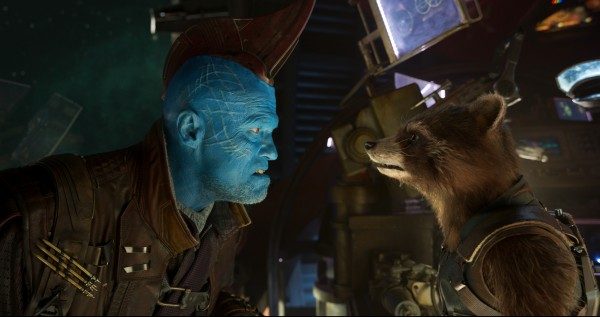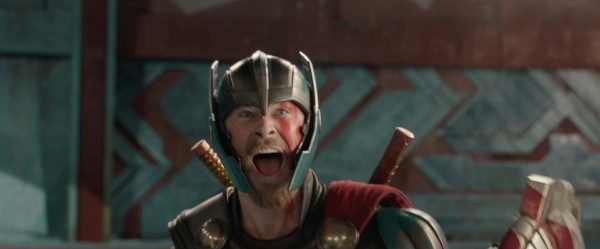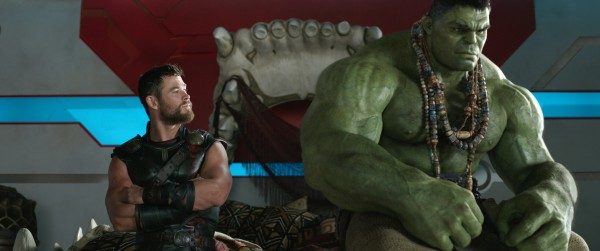

Though audiences and critics tend to complain about superhero fatigue these days, 2017 has proven to be a bright year for comic book movies. Most of the genre’s offerings this year have managed to achieve both financial success and critical praise, and as we celebrate the arrival of the refreshingly comedic Thor: Ragnarok, it seems an appropriate time to investigate the new angle superhero films have taken in 2017.
Last year was more or less defined by massive superhero team-ups. In the history of comic book cinema, 2016 will probably be best remembered for giving us Batman v Superman: Dawn of Justice and Captain America: Civil War. These two films, the former from Warner Bros. and DC Entertainment and the latter from Marvel Studios, served almost as flip sides of the same coin.
Civil War represented a natural progression following years of cinematic build-up. We have watched the relationship between Chris Evans’ Captain America and Robert Downey Jr.’s Iron Man grow and develop since their first meeting in 2012’s The Avengers, and before that we saw their individual character backstories explored in their solo films. Thus, when the characters are presented with a polarizing piece of legislation in Civil War, we understand why their points of view differ based on their respective past experiences, leading to a divide amongst their superhero team, the Avengers.
While it could have come across as chaotic, the movie received a mostly positive response, mainly because these are characters that audiences have come to know over the course of nearly a decade of carefully-structured movies.
Still, Civil War was criticized by some for biting off a bit more than it could chew. The movie attempted somewhat rushed debuts of popular characters Spider-Man and Black Panther, which came across less as necessary story elements and more as highly intentional plants for future Marvel films.
Batman v Superman, however, took a different approach. After debuting Henry Cavill’s Superman in 2013’s Man of Steel, DC decided that it was ready for a Marvel-scale ensemble film. But this gave Batman v Superman the distinct challenge of introducing major characters like Ben Affleck’s Batman and Gal Gadot’s Wonder Woman for the first time, all while developing a broiling conflict between the characters and hastily planting the seeds for future sequels. It sounds like too much for one movie, and most critics and audiences agreed that it was.
The same criticisms were made of DC’s Suicide Squad, released five months later, which attempted a team-up of several supervillains who had never been seen on screen before.
Both Marvel and DC likely headed into 2017 less focused on giant ensemble spectacles and instead hoping for movies that could really connect with audiences, like 2008’s Iron Man and The Dark Knight. 20th Century Fox was likely feeling the same way, fresh off of X-Men: Apocalypse, which became one of 2016’s least memorable and least lucrative superhero flicks due to a forgettable story and an overload of characters both old and new.
Thus, there was a sense of hands being washed and heads being cleared as 2017 kicked off. 20th Century Fox set the stage for a different kind of superhero film with their March release, Logan. The movie wildly broke away from the confines of the labyrinthine X-Men universe by chronologically distancing itself from the majority of X-Men characters in order to focus on Hugh Jackman’s Logan (also known as Wolverine) and Patrick Stewart’s elderly Charles Xavier. In effect, it became the opposite of a superhero team-up movie.
The film centers on Logan and Xavier’s attempts to ferry a young girl named Laura to safety while being pursued by the biological corporation that created her. While the R-rated movie boasts plenty of action scenes, this is no spectacle film. The violence is brutal, brief, and relatively small in scale. Instead, the emphasis is on the father/son relationship between Logan and Xavier.
In this film, Hugh Jackman’s Logan, blessed with a healing power that has allowed him to survive for nearly two hundred years, is finally showing the signs of age as his mutant abilities fade. Meanwhile, the telepathic Xavier is fighting a debilitating brain disease that causes violent, dangerous seizures.
The two once-great mutants are now a sorry sight, but as they work together to protect Laura, they re-establish the close bond they developed in earlier films, and Xavier convinces Logan of the value of family.
From the beginning of the movie’s development, director James Mangold stated that he wanted to make a more personal story, free of the world-shaking stakes that often weigh down big-budget superhero adventures (including Wolverine’s previous solo outing, which Mangold also helmed).
Thus, we ended up with a superhero film that plays more like a Western crossed with a road movie, as our unlikely heroes travel from Mexico to North Dakota crammed together in a small car.
Hugh Jackman also stated early on that this film would mark his final appearance as Wolverine, coloring the movie with an even greater focus on character over spectacle. After 17 years and nine movies in the role, Jackman’s world-weary, exasperated final turn as Logan garnered notable critical praise and helped propel the film to an impressive box office haul and an even more impressive fan response. Some raved that Logan was one of the best superhero films of all time.
But, as is the nature of cinema these days, it wasn’t long before another superhero flick from a rival studio hit theaters. May brought us Guardians of the Galaxy Vol. 2, the highly-anticipated follow-up to Marvel Studios’ colorful, zany action-comedy featuring a team of intergalactic underdogs who must join forces to save the galaxy.
The first movie functioned as a space epic of sorts, sending our band of outcasts from planet to planet in an effort to prevent a villainous zealot from wiping out an entire world. While Vol. 2, like its predecessor, is technically an ensemble piece, it operates on a much smaller scale than the first film, confining most of its action to two locations.
Also, while the original focused on the dynamics between the Guardians, in Vol. 2 writer-director James Gunn gives every member of the team their own individual emotional journey.
The assassin Gamora must put aside her competitive relationship with her violent sister Nebula and come to terms with the fact that their sibling rivalry has led Nebula to become the villain she is today. By the end of the movie, the two have struck up something of a newfound alliance.
The simple-minded muscleman Drax progresses from insulting naive alien Mantis to befriending her, as the two realize they share a dark past and a distinctly literal sense of humor.
Even rebellious and sarcastic raccoon mercenary Rocket (the member of the Guardians Gunn says he relates to the most) has an emotional character arc in Vol. 2, using his abrasive personality to avoid making deep connections with others until fellow abrasive mercenary Yondu convinces him that being part of a family is better than being alone.
Peter Quill is given the dominant story that drives the film: He at last comes face-to-face with his biological father and must work to understand what it means to have a family. He comes to realize that all along, his true father was Yondu, the curmudgeonly bandit who forced a young Quill to join his crew.
It’s telling that while the first movie culminated in an all-out planetary assault, Vol. 2 ends with an emotional funeral sequence. Once again, it’s a superhero movie that cares more about its characters’ personal journeys than their capacity for action and violence.
Following Marvel’s May release came DC’s Wonder Woman. The movie was a welcome surprise for audiences who had been following DC’s recent cinematic efforts. Rather than seemingly throwing everything at the wall in the hopes that something would stick, it seemed that DC and Warner Bros. had actually trusted the creative leadership of director Patty Jenkins, allowing her to craft what nearly everyone agrees is by far the best film in DC’s current cinematic universe.
With Wonder Woman, Jenkins manages to deliver a thematically resonant and genuinely inspiring origin story focused on Diana Prince’s evolution from headstrong warrior to worldly and capable crusader for justice. Gal Gadot embodies the character flawlessly, highlighting her emotional complexity and sensitivity while also emphasizing her strength, intelligence and leadership ability.
Chronicling Diana’s efforts to track down and destroy Ares, the god of war, the movie pairs Gadot with Chris Pine’s World War I American spy Steve Trevor. Their relationship is cleverly used as a device to pit the cynicism of someone who’s seen the worst of humanity against the passionate idealism of an outside observer looking at the human race with fresh eyes (an idealism our world could use a lot more of these days).
The brilliantly-constructed film is powerful because it’s personal. Through Diana’s journey, we see her views change as she experiences humanity’s capacity for violence. But we also glimpse the moments of kindness she witnesses, which ultimately offer Diana, and the audience, a renewed sense of hope in the human race.
As Wonder Woman continued to wow audiences and rake in box office revenue through the early part of the summer, Marvel Studios and Sony Pictures struck back with their July release, Spider-Man: Homecoming. Serving as the titular character’s second cinematic reboot following a deal between Marvel and Sony to share creative control of Spidey, the movie understandably sought to differentiate itself from previous interpretations of the webhead.
In order to achieve this goal, Marvel once again scaled things down, allowing director Jon Watts to create essentially a high school coming-of-age story. The movie centers on Tom Holland’s Peter Parker, a superpowered high schooler eager to join the Avengers after having been temporarily recruited by Iron Man’s alter ego Tony Stark for a crucial battle in Civil War. But most of Peter’s days are filled with mundane classes and minor crime-fighting efforts.
As Spider-Man, Peter does eventually come up against a powerful foe, Michael Keaton’s Adrian Toomes. Yet in a rare departure from most Spider-Man movies, Homecoming frames its supervillain not as a mad scientist or a megalomaniacal tyrant, but as a down-on-his-luck working class underdog just trying to get by. Keaton infuses Toomes with a humanity and sense of familial devotion that makes him almost as relatable as Holland’s Peter.
Tony Stark shows up as well, but not (as one might expect) for the sake of staging an epic Iron Man/Spider-Man action sequence. Rather, Stark serves as a father figure to the inexperienced Peter. The movie is ultimately more about surviving the daily struggles of high school and finding your place in the world than about facing supervillains (a dramatic departure from the last Spider-Man flick, 2014’s The Amazing Spider-Man 2, which suffered from an overload of villains and a contrived plot). Homecoming even ends with Peter refusing to join the Avengers full-time, opting to remain devoted to his family and friends as a street-level superhero.
Today, the trend of smaller, character-focused superhero movies seems to be continuing. Rather than following in its predecessors’ footsteps, which functioned as melodramatic fantasy epics that painted in broad, Shakespearean strokes, director Taika Waititi’s Thor: Ragnarok throws the heroic God of Thunder onto a strange, trippy planet where he is reunited with fellow Avenger Bruce Banner, basically turning the movie into a Thor and Hulk buddy comedy.
Waititi infuses Ragnarok with wittily-improvised dialogue and an offbeat, irreverent sense of humor. Most notably, he quite literally strips Thor down to his barest essentials, in the process allowing Chris Hemsworth’s infectious sense of humor to shine: In the film, Thor’s treasured hammer Mjolnir is destroyed, his trademark golden locks are chopped off, and his home, Asgard, is captured and terrorized by Hela, the goddess of death.
Again, the memorable moments in Ragnarok are not massive action set pieces, but rather a comical dialogue between Thor and the alien Korg (performed by Waititi himself) regarding Thor’s hammer, and an Asgardian stage play depicting events from a previous Thor film with a heavy dose of playful self-mockery.
Though while Ragnarok may be the latest in this year’s slew of character-driven comic book movies, it seems that this pattern might not continue for much longer.
Up next on the schedule is DC’s Justice League, another large-scale team-up film that, judging by its trailers, seems to be leaning more on CG-heavy action sequences than meaningful character moments to grab the audience’s attention. As for Marvel, after the highly-promising Black Panther, next year will bring the gargantuan behemoth Avengers: Infinity War, probably the largest superhero team-up movie of all time.
We may be reaching the end of the very brief era of “the personal superhero film” (or perhaps “the superhero movie as a character study”), but hopefully Marvel, DC, Fox and others are able to retain some elements of this year’s successes in their future projects.
Only time will tell whether 2017 will be remembered as an unexpected bright blip on the timeline of comic book cinema, or the beginning of a character-driven renaissance for the superhero movie.











